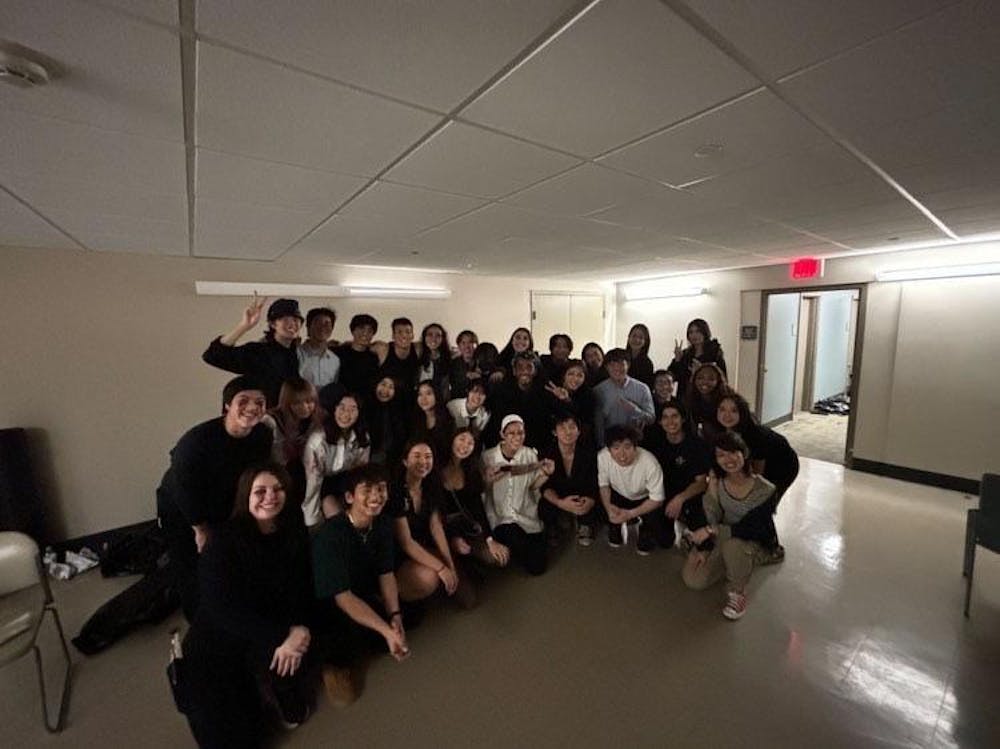On a dark and not-so-stormy night, students lined up outside Sayles Hall for the Japanese Cultural Association’s annual haunted house. Despite the unseasonably warm weather, stepping into Sayles sent chills down the spines of attending students, who were quickly in a world of horrors.
“This year's theme is a haunted train station,” said Kyoko Saito ’25, one of the co-presidents of JCA. “We always try to incorporate some elements of Japanese culture. So for this year for the train station, we have a sushi restaurant or elements of things you would find in a Japanese train station that you might not find in America.”
Upon entering the haunted house, guests watched a short movie on the story of this year’s haunted house, directed by JCA co-president Arata Fujii ’25. “Its main purpose is to make sure that everyone knows what's going on, what the backstory is,” Fujii said. “I write the script for (the short movie) every single year ... (and) direct it every single year. So it's been a lot of fun to see how people react to it.”
Fujii added that his favorite part of running the haunted house occurs right before it starts: when JCA members come together to eat dinner and watch the video as a team.
After watching the short movie, guests made their way into the building’s basement, where they walked through dark, decorated rooms and collected candy while JCA members dressed in creepy costumes jumped out at them, some yelling and others laughing maniacally. Kaila Sung ’25, another JCA co-president, described the haunting as hard but fun work.
“When you're actually in there and constantly scaring people, and you don't know what to expect with the new groups and you don't know who's coming in, it's a lot of work,” Sung said.
Fujii discussed the difficulty of coordinating all of the small details that go into organizing the haunted house, such as turning off all the lights in Sayles's basement.
“For them to turn off all the lights, … electricians need to come in and actually turn the power off, and usually that can take a while,” he said. “It's always been a struggle to make sure that everything runs smoothly.”
Fire marshals also check the haunted house to ensure exit signs are not obstructed, Fujii explained.
He added that each team also spends a few weeks gathering props and costumes, planning out their assigned room and selling tickets for the event. But while planning the haunted house is a “month-long” process, Saito said the event brings JCA members together for a “fun” bonding experience.
“You get to talk with your group and just get to know them better,” Sung said.
While the exact origins of JCA’s haunted house event are unknown, group members described it as an important tradition of the organization.
“The Japanese haunted house is not necessarily only enjoyed on Halloween in Japan,” Fujii said, explaining that people in Japan visit haunted houses year-round, especially during the summertime.
The event is “very resonant with our mission of trying to bring Japanese cultures to Brown’s campus but also being accepting of the local cultures of the U.S.,” he added. “I think we do a pretty good job of mixing those two.”
According to Tiffany Eddy ’26, JCA events chair, JCA’s hard work always pays off: Last year, over 300 students attended the event, which has garnered a haunting reputation on campus.
Timothy Fong ’26 said that Eddy’s screaming was the most “impressive” part of the haunted house this year.
“I heard it was a really scary experience and I feel like that would be fitting for Halloween,” Ryan Liu ’27, another guest walking into the haunted house, said. “I heard it was the Japanese Cultural Association putting it on, so I also wanted to support them.”
Clarification: A previous version of this article included a source incorrectly crediting the creators of the short film. The Herald regrets the error.

Kate Butts is a senior staff writer covering University Hall. Outside of The Herald, she loves running, board games and Trader Joe's snacks.





